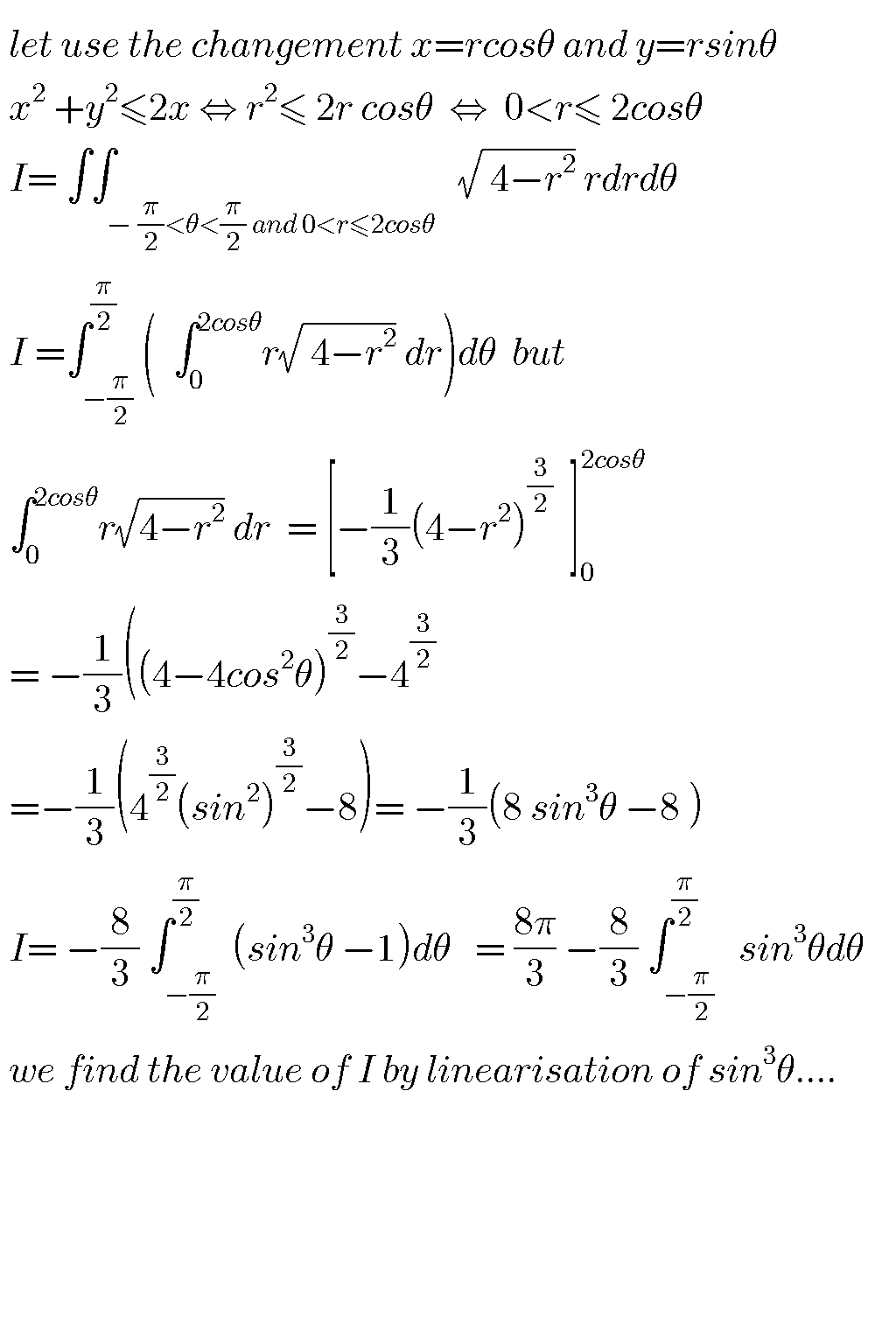
AllQuestion and Answers: Page 1828
Question Number 27624 Answers: 0 Comments: 3
Question Number 27621 Answers: 0 Comments: 0
Question Number 27620 Answers: 0 Comments: 1
Question Number 27619 Answers: 0 Comments: 1
Question Number 27618 Answers: 1 Comments: 0
Question Number 27616 Answers: 0 Comments: 1
Question Number 27615 Answers: 0 Comments: 2
$$\int{x}^{\mathrm{5}/\mathrm{2}} \left(\mathrm{1}−{x}\right)^{\mathrm{3}/\mathrm{2}} {dx} \\ $$
Question Number 27614 Answers: 0 Comments: 2
Question Number 27613 Answers: 1 Comments: 1
Question Number 27612 Answers: 1 Comments: 0
$$\int\frac{\mathrm{1}}{\mathrm{3}+{cos}^{\mathrm{2}} {x}}{dx} \\ $$
Question Number 27611 Answers: 1 Comments: 0
Question Number 27609 Answers: 0 Comments: 0
Question Number 27608 Answers: 0 Comments: 5
Question Number 27607 Answers: 0 Comments: 0

Question Number 27606 Answers: 0 Comments: 0

Question Number 27605 Answers: 1 Comments: 0

Question Number 27604 Answers: 0 Comments: 1
Question Number 27601 Answers: 0 Comments: 0
Question Number 27600 Answers: 0 Comments: 1
$${find}\:\:\:\int_{\mathrm{0}} ^{\pi} \:\:\frac{{t}}{\mathrm{2}+{sint}}\:{dt} \\ $$
Question Number 27599 Answers: 0 Comments: 0
Question Number 27598 Answers: 0 Comments: 1
Question Number 27597 Answers: 0 Comments: 0
$${find}\:\int\:\:\frac{\sqrt{{cos}\left(\mathrm{2}{x}\right)}}{{cosx}}\:{dx}. \\ $$
Question Number 27596 Answers: 0 Comments: 1
$${find}\:\:\int\:\:\:^{\mathrm{3}} \sqrt{\:{x}^{\mathrm{2}} −{x}^{\mathrm{3}} }\:\:{dx} \\ $$
Question Number 27595 Answers: 0 Comments: 1
Question Number 27603 Answers: 0 Comments: 1
$${Find}\:\:{the}\:{value}\:{of}\:\:\:{i}^{{i}} \:\:? \\ $$$$ \\ $$$$ \\ $$
Question Number 27587 Answers: 1 Comments: 1
Pg 1823 Pg 1824 Pg 1825 Pg 1826 Pg 1827 Pg 1828 Pg 1829 Pg 1830 Pg 1831 Pg 1832
